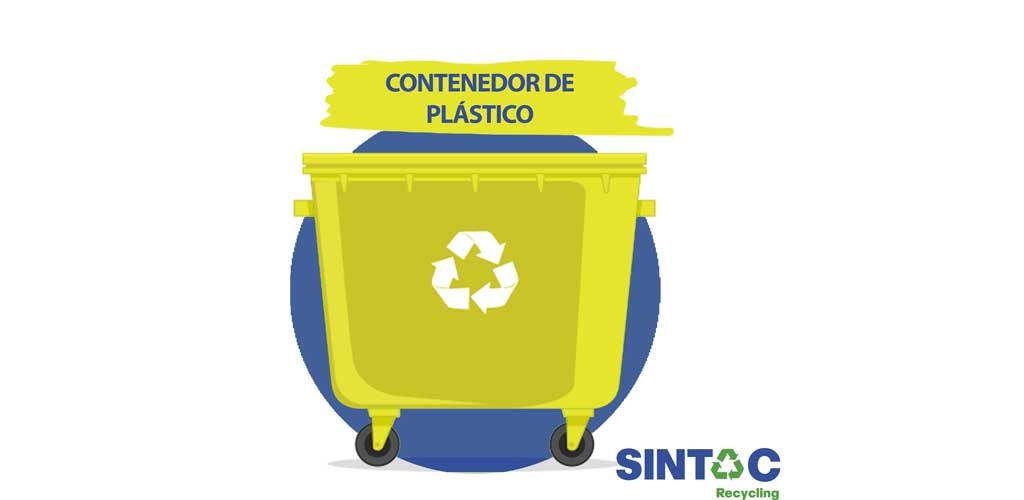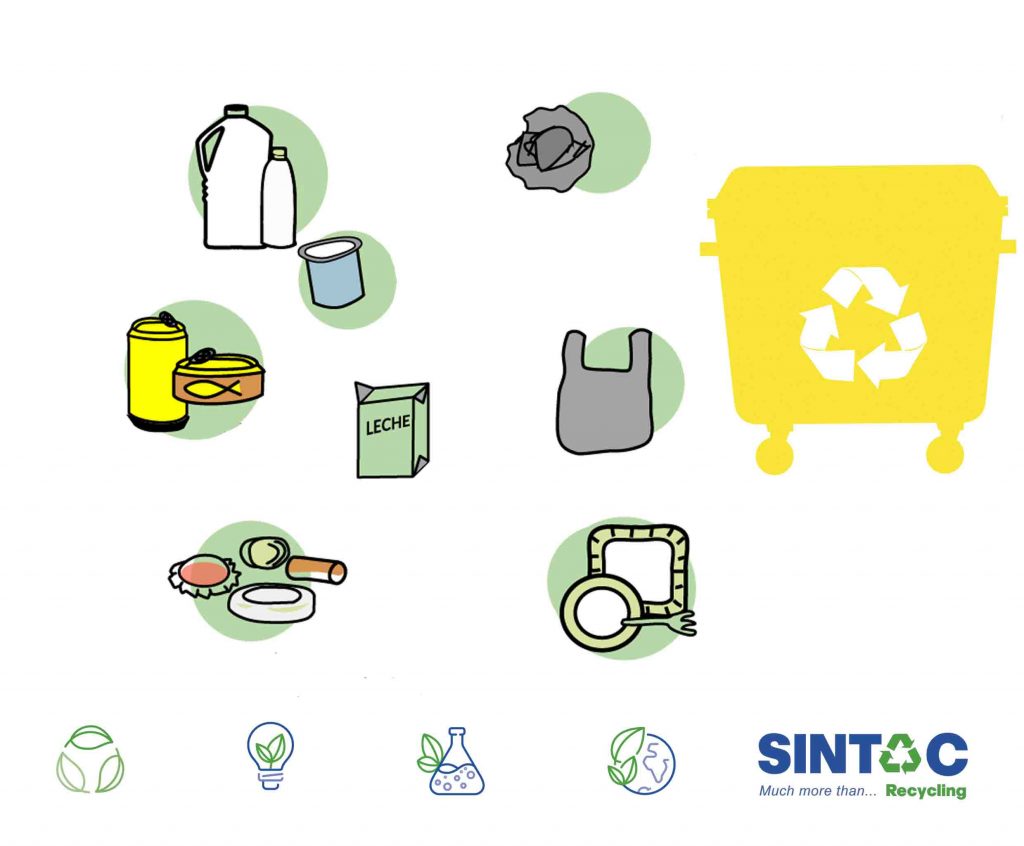Yellow container – What goes inside?
Knowing the types of recycling is fundamental to start our ecological work and collaborate in the care of the environment.
During these years we have become more and more aware of the importance of recycling, many doubts have arisen about, “In which container should I throw…“. Of the 4 containers that we have for recycling, it seems that we already have clear that we must deposit in the Blue container, in the Green container and in the Brown container, but what happens with the yellow container, many plastic products continue to appear, but it is difficult for us to be clear if we are recycling it well.
The yellow bin has been in operation in Spain for 20 years, it seems little, doesn’t it? On average there is one yellow bin for every 117 inhabitants.
Although there has been a very good evolution, and every year the amount of plastic containers, briks and cans recycled per inhabitant increases, a third of the population still does not know exactly where each type of waste goes.

What to throw in the yellow bin?
Plastic packaging: Bottles and carafes of water, soft drinks, oil, tin cans; rings that hold the packs of cans; yoghurt and butter containers; “white cork” trays, aluminium trays; jars of cleaning products, liquid detergents; cosmetic containers, gel, shampoo, creams, deodorant bottles; plastic, metal and metal caps and plugs; etc..:
Plastic bags: shop bags and wrapping, film paper (aluminium), blister packs, etc. Brik packaging: Milk, juice, soup, wine, oil, etc. containers.
Brik packaging: Milk, juice, soup, wine, oil, etc. containers.
Metal packaging: Beverage cans, canning jars, aerosols, trays and aluminium foil, metal, plastic and metal sheet and lids, etc.

What should I NOT put in the yellow bin?
It is logical to think that all objects made of plastic that are no longer of use to us go in the yellow bin, but this is not always the case.
They should not be deposited:
- · Plastic toys (they should go in the waste bin, although the best way is to take them to the eco-park or the eco-mobile, they can also be donated to many organisations that are dedicated to social work or to the recycling centre).
- · Bottles and dummies (waste container)
- · Kitchen utensils and plastic buckets (waste container).
- · Aluminium coffee capsules (waste container).
- · Plastic paper used in butchers’ and fishmongers’ shops (waste container).
- · Tupperware (If you can’t fix it or reuse it for something else, no matter what material it is made of, you should throw it in the grey bin (normal rubbish).
- · CD’s and DVD’s boxes (waste bin)
- · Silicone moulds for cooking (waste bin)
Good practices for good recycling
- Crush your packaging. Carafes, bottles, cans and cartons take up a lot of space. Remember to crush the containers before placing them in the container, they will take up less space and will fit more. With this simple action we can make the most of the capacity of these containers, practically doubling the amount of waste they can hold, and avoid annoying overflows.
- The plastic bags in which we transport glass and newspapers to their specific containers (green and blue) should then be placed in the yellow container.
- Try to reuse plastic bags for your shopping and, when they are no longer useful, use them as rubbish bags.
Did you know that…
Did you know that 6 briks can be used to make a shoebox, 40 plastic bottles can become a fleece lining or 80 drinks cans can become a bicycle tyre? 8 tin cans can have a second life as a cooking pot, 22 plastic bottles can become a T-shirt and 550 cans can become a chair. And these are just a few examples!
In addition, each recycled container has its impact on the fight against climate change and pollution, as recycling 6 cans or briks counteracts the emission of 10 minutes of an exhaust pipe.
At SINTAC we continue to work daily to promote extended producer responsibility, corporate social responsibility, ecology, climate action, the reduction of waste creation, and the substitution of the use of raw materials with recycled materials.
Recycling is also an example of social responsibility and care for the environment. Do you practice it?













